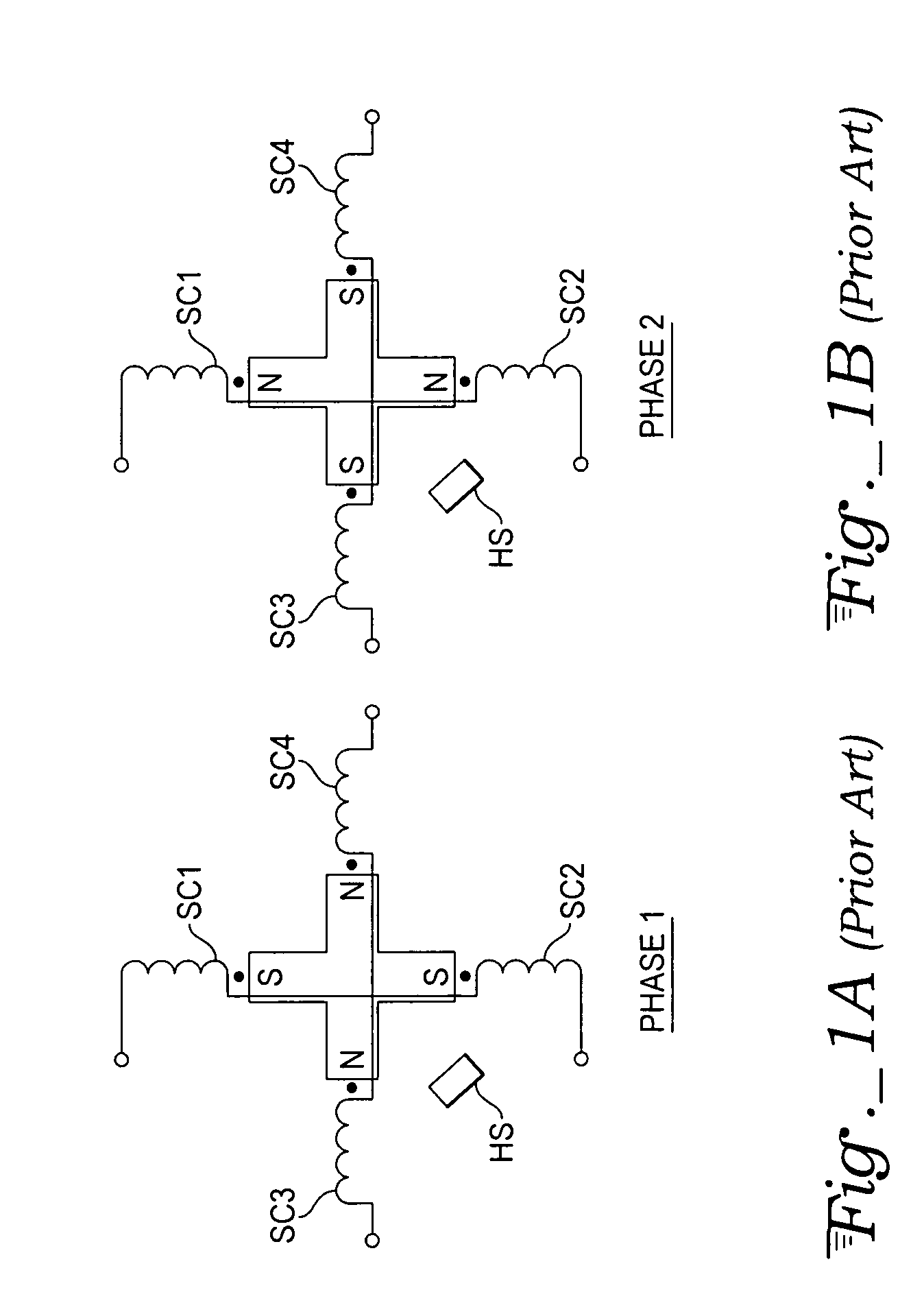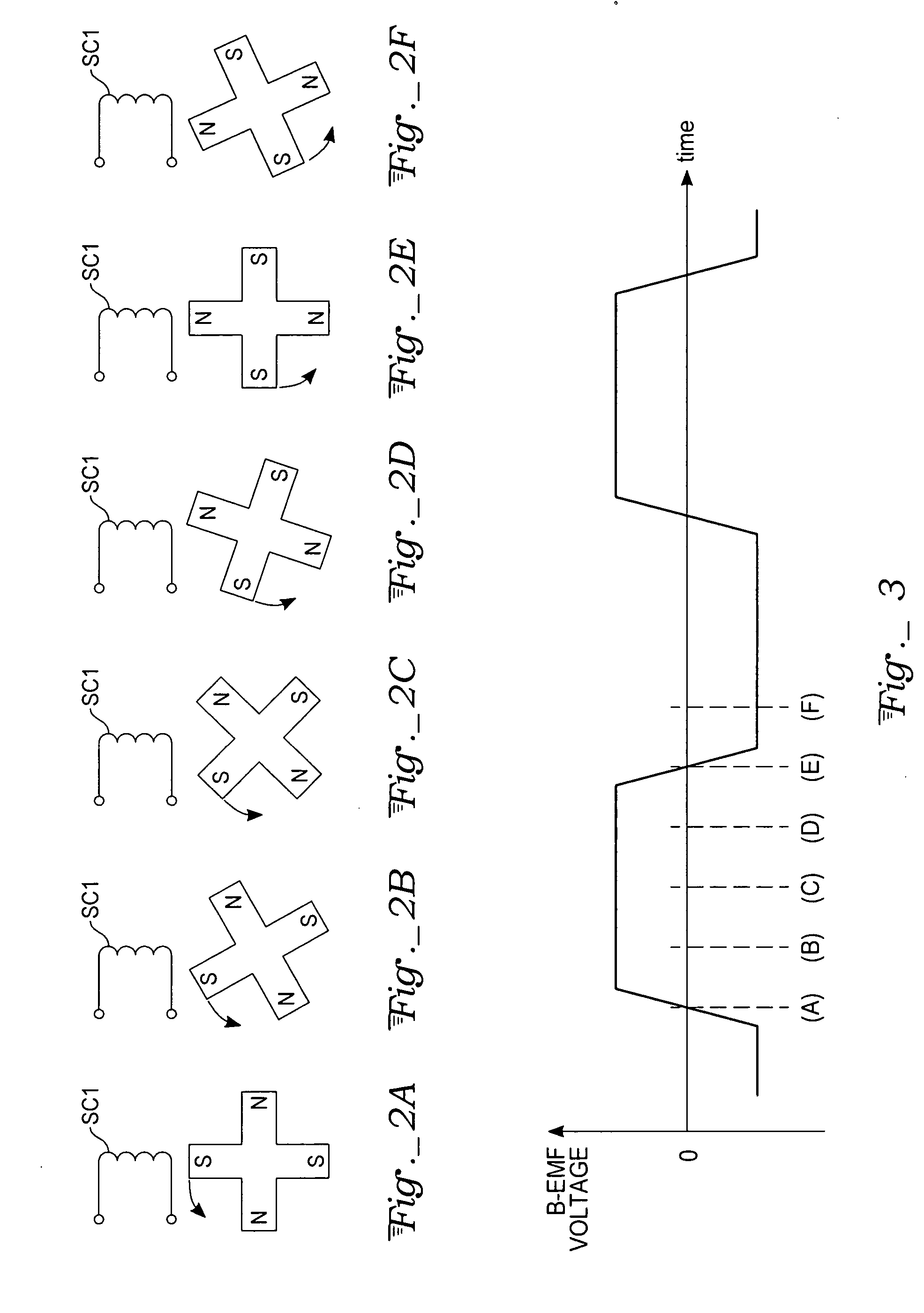Sensorless control of two-phase brushless DC motor
- Summary
- Abstract
- Description
- Claims
- Application Information
AI Technical Summary
Benefits of technology
Problems solved by technology
Method used
Image
Examples
Embodiment Construction
[0025] With reference to FIG. 4, an exemplary motor control system in accord with the present invention is provided to control a two-phase BLDC motor 11. Two inputs are seen: one input 13 is an external speed reference according to which the motor speed is adjusted to some target speed. The external reference can be, e.g., a temperature sensor, as for when the motor drives a cooling fan. An analogue temperature signal would be converted to corresponding digital reference speed data 14 using an internal analog-to-digital (ADC) circuit. Alternatively, the external reference can be a pulse width modulated (PWM) signal generated by a system host controller with varying duty cycle. As described later, the motor speed is controlled directly using a PWM signal as the activation voltage driving the stator coils, where different duty cycles produce different motor speeds. Any type of speed reference, temperature or otherwise, can be measured and used to establish a desired motor speed.
[0026...
PUM
 Login to View More
Login to View More Abstract
Description
Claims
Application Information
 Login to View More
Login to View More - R&D
- Intellectual Property
- Life Sciences
- Materials
- Tech Scout
- Unparalleled Data Quality
- Higher Quality Content
- 60% Fewer Hallucinations
Browse by: Latest US Patents, China's latest patents, Technical Efficacy Thesaurus, Application Domain, Technology Topic, Popular Technical Reports.
© 2025 PatSnap. All rights reserved.Legal|Privacy policy|Modern Slavery Act Transparency Statement|Sitemap|About US| Contact US: help@patsnap.com



